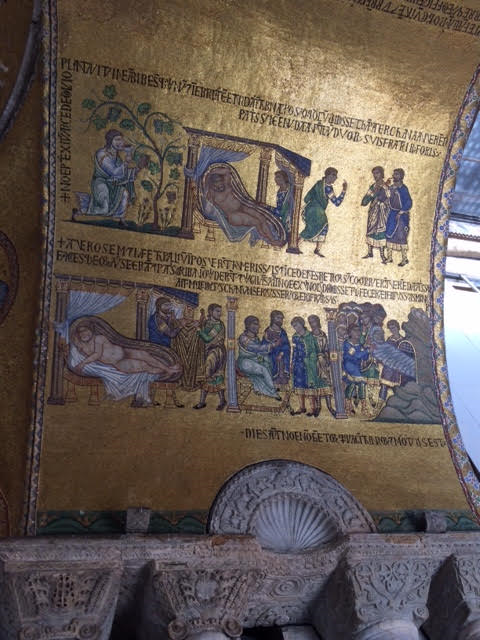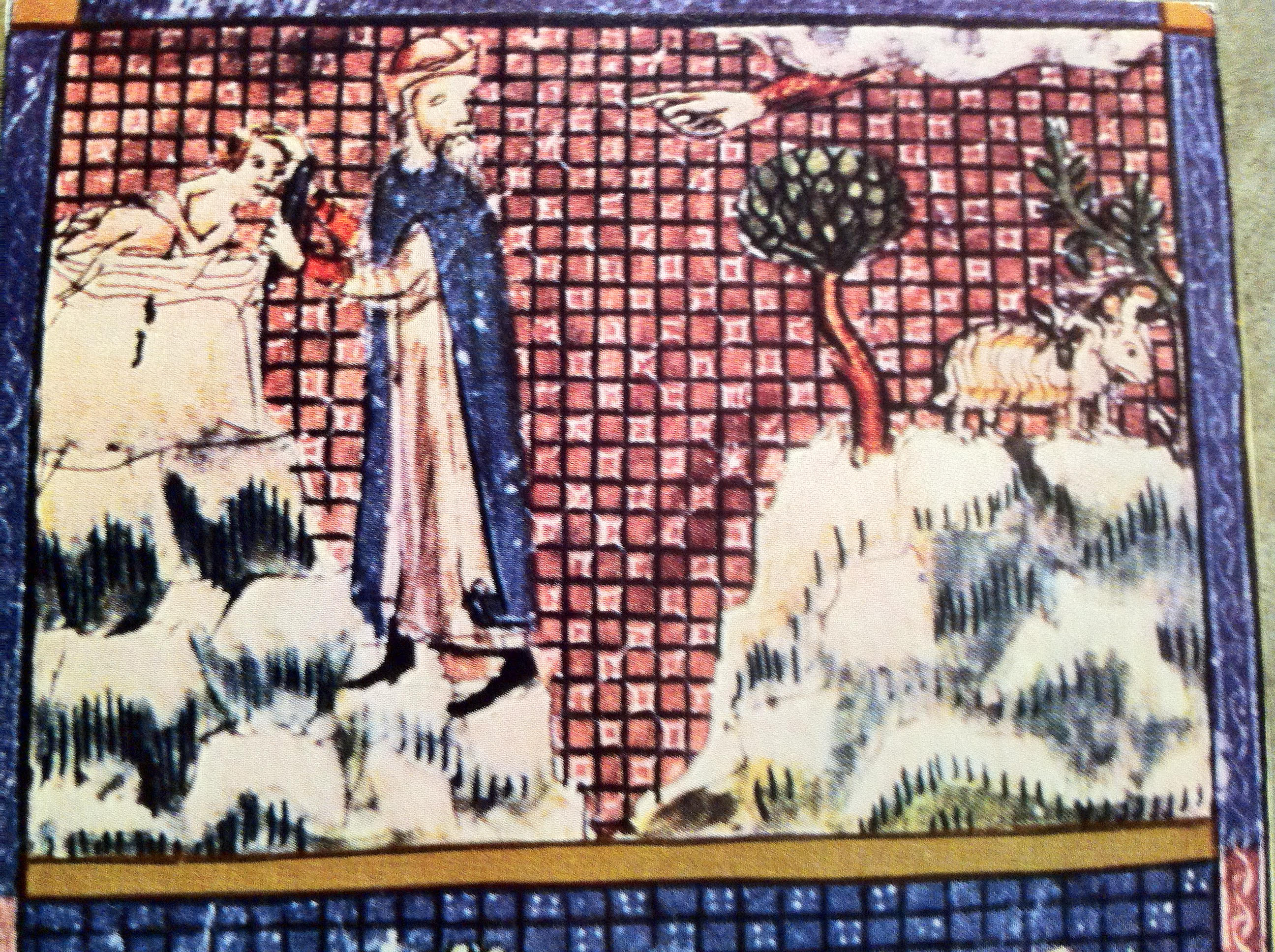
These mosaics in the narthex (vestibule) of St. Mark’s Basilica in Venice illustrate part of the story of Noah.
Most people recognize Noah. He built the Ark to save the world from the flood, right? He collected all the animals, two-by-two, and loaded them onto the ark so that they could ride out the flood in safety and after the flood was over, he released them to repopulate the earth. What else is there to know?
Noah’s story continues after the end of the flood. When Noah and his family (wife, three sons, and their wives) came out of the ark, the earth was devestated. One of the first things they had to do was begin farming so that they could have something to eat. As part of the farming project, Noah dug a garden and planted grapes. When the grapes were ripe, he harvested them and made wine. When the wine was ready, Noah began to drink it. And drink it. And DRINK it! The first recorded instance of drunkeness! He got drunk and passed out naked in his tent. Naked.
His son Ham walked into the tent and saw his father naked. He went out and told his brothers Shem and Japheth what he had seen. Rather than leave their father laying naked, Shem and Japeth went into the tent, walking backwards and holding a cloak in front of their eyes so that they would not see their father naked. They covered Noah with the cloak and walked out again. When Noah woke up, he knew–apparently without anyone needing to tell him–what had happened. He was so furious at Ham’s behavior that he cursed Ham’s son Canaan.
Ham had seen his father naked. Not only did he do nothing to cover Noah but he went out and told other people and made fun of Noah for lying around drunk, passed out, and naked on the floor. Because Noah seemed to know what had happened, even without anyone telling him, early Jewish commentary thought that Ham had sexually abused his father in some way that left physical evidence behind and suggested that he had castrated his father. Since he had made it impossible for his father Noah to have any more children, Noah cursed Ham’s son Canaan with slavery to insure that Ham had no legal, property-owning descendants. (This idea was used to justify the Israelite occupation under the leadership of Joshua of the area known as Palestine or Canaan after the Exodus. Since Ham’s descendants were also thought to have populated Egypt and the rest of Africa, the curse of Noah was also used by preachers and politicians in the American South to justify the race-based slavery there.)
Early Christian preachers thought that Ham’s mockery of Noah was more important than “having seen his father naked.” Ham made fun of his father’s shame in public, prefiguring the ridicule Christ would face when dying on a cross. Since Christians respect Christ’s flesh like Shem and Japheth respected the flesh of their father, Ambrose of Milan argued, they too will be blessed. Reluctant to imagine that Noah, a savior like Christ, had been raped or castrated, Christian interpreters offered comparatively mild interpretations of this passage. Still, they were also convinced that Ham—and by extension his son Canaan—were wicked and deserved the harsh punishment they received.
For more about the ways the story of Noah and his sons, read here.
On the roof of the narthex (porch) of St. Mark’s Basilica in Venice are a series of gorgeous Byzantine-style moasiacs illustrating stories from the Old Testament, beginning with the Creation and continuing with the Tower of Babel, the Flood, the lives of Abraham and Joseph, concluding with Moses leading the Israelites through the desert to the Promised Land. The mosaics were made during the 1200s.


